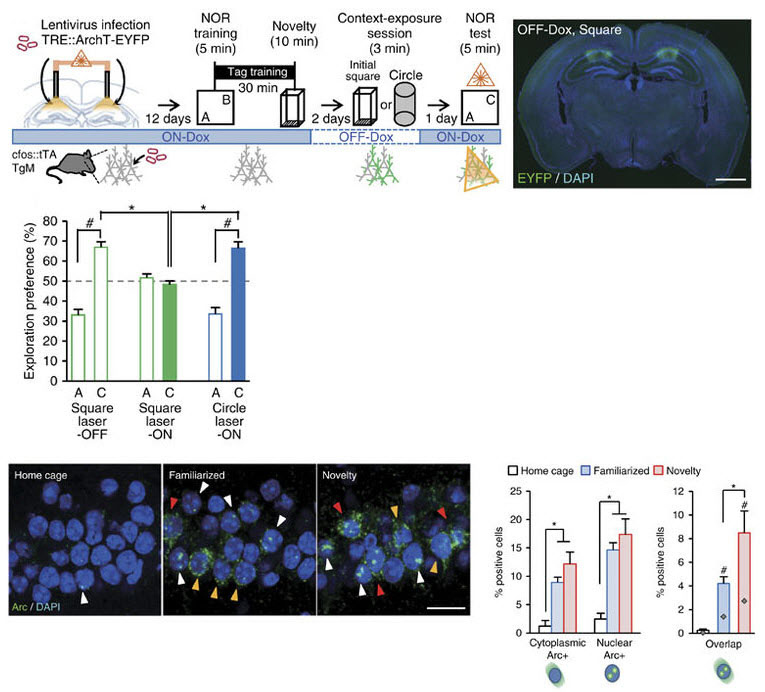Research Abstract
行動タグの神経ネットワークメカニズムとしての細胞タグ
Cellular tagging as a neural network mechanism for behavioural tagging
2016年8月1日 Nature Communications 7 : 12319 doi: 10.1038/ncomms12319

行動タグとは、弱い(ささいな)経験によって誘導された短期記憶が、新規な強い経験と時間的に関連づけられることで長期記憶(LTM)へと変換することを指す。別々の経験の記憶エングラムをそれぞれ担っている神経細胞集団が相互作用して行動タグが成立する仕組みはまだ明らかになっていない。今回我々は、弱い経験を行動タグ付けすることによって形成されたLTMの形成は、弱い経験と新規な経験のそれぞれに対応する神経細胞集団が重複することにより引き起こされることを示す。新規物体認識(NOR)課題の弱い経験が行動タグの成立によりLTMになるとき、その弱い経験と、新規環境曝露(NCE)課題の両方によって活性化された神経細胞の数(オーバーラップ細胞)が海馬CA1領域中で増大する。NCEに対応する神経細胞集団の活動を光遺伝学的に抑制すると、NOR-LTMの獲得が抑えられ行動タグが阻害される。従って、NORにより活性化された細胞集団はNCEによってタグ付けされ、次いでNCEの記憶エングラムへと選択的に取り込まれて、行動タグが成立する。
Corresponding Author
Behavioural tagging is the transformation of a short-term memory, induced by a weak experience, into a long-term memory (LTM) due to the temporal association with a novel experience. The mechanism by which neuronal ensembles, each carrying a memory engram of one of the experiences, interact to achieve behavioural tagging is unknown. Here we show that retrieval of a LTM formed by behavioural tagging of a weak experience depends on the degree of overlap with the neuronal ensemble corresponding to a novel experience. The numbers of neurons activated by weak training in a novel object recognition (NOR) task and by a novel context exploration (NCE) task, denoted as overlapping neurons, increases in the hippocampal CA1 when behavioural tagging is successfully achieved. Optical silencing of an NCE-related ensemble suppresses NOR–LTM retrieval. Thus, a population of cells recruited by NOR is tagged and then preferentially incorporated into the memory trace for NCE to achieve behavioural tagging.

